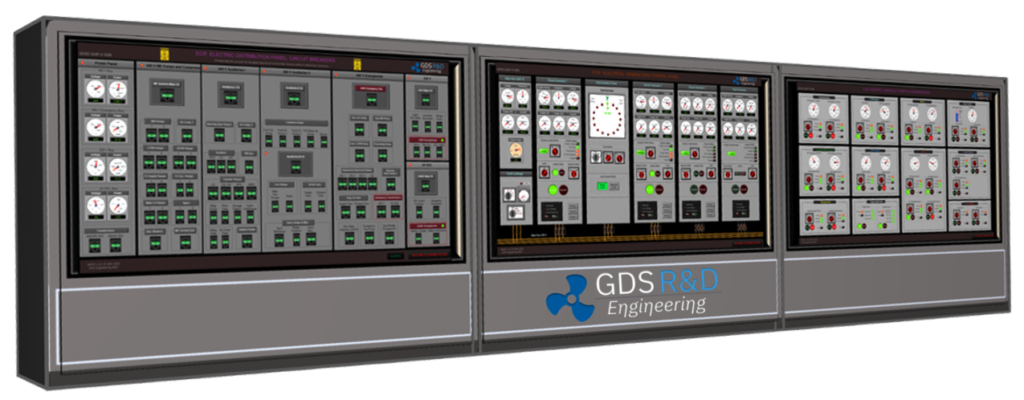
Ship Electrical Systems Simulator (Ship ESS™) is specifically designed to meet
IMO STCW 2010 training requirements on Electrical and Control Systems Competencies
With our new Student Exercise Workbooks, our simulators can rapidly fit into your training.
An example course name: Ship Electrical Systems
(Please note that this course was introduced as an elective course into the Istanbul Technical University Marine Enginering BS license program in 2018. The course was the mostly chosen by the students.
Ship Electrical Systems Simulator (Ship ESS™), to support your classroom objectives, includes the following important functions:
– Ship electrical generation plant: Diesel generator groups and a shaft generator
– Electrical generation diagrams, simulating the generated electricity and system parameters
– Electrical control panels and diagrams with user interfaces
– Electrical distribution network (440 VAC, 220 VAC, 24 VDC, and Emergency Bus)
– Electrical consumers user interface with adjusting their properties for various scenario settings.
Difference between Ship ESS and a classical Engine Room Simulator (ERS)
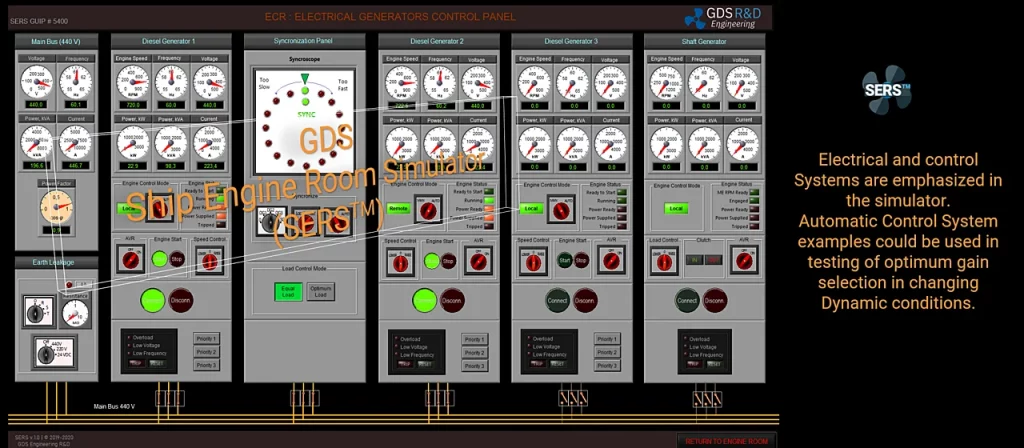
- Ship ERS™ includes all systems, including the functions of the Ship ESS™.
- However, there is a need for utilizing the electrical systems simulators in the electrical systems courses. Therefore;
- Unlike Ship Engine Room Simulator (Ship ERS™), in Ship ESS™, electrical consumers, such as compressors, pumps, etc., are activated/deactivated via a user interface. The user selects the items to operate, in other words, the trainee does not need to line up the sub systems and pipelines. With that the training is focused on electrical systems only.
Our simulators are now available as online / eLearning modules on GDS Connect, which is our platform and ecosystem for maritime simulation and training.
Maritime Simulator Products
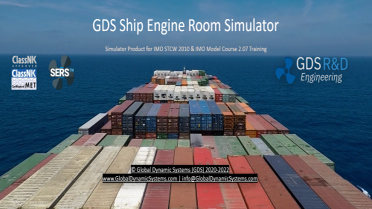
(SERSTM)
SERSTM is a certified, advanced, and Full Mission engine room simulator that can be used in both laboratory and distributed team environment training.
Click to read more about SERSTM.

SESSTM is a software simulation of all electrical systems in a typical engine room. It can be used as a laboratory software or in-class demonstration software.
Click to read more about SESSTM.
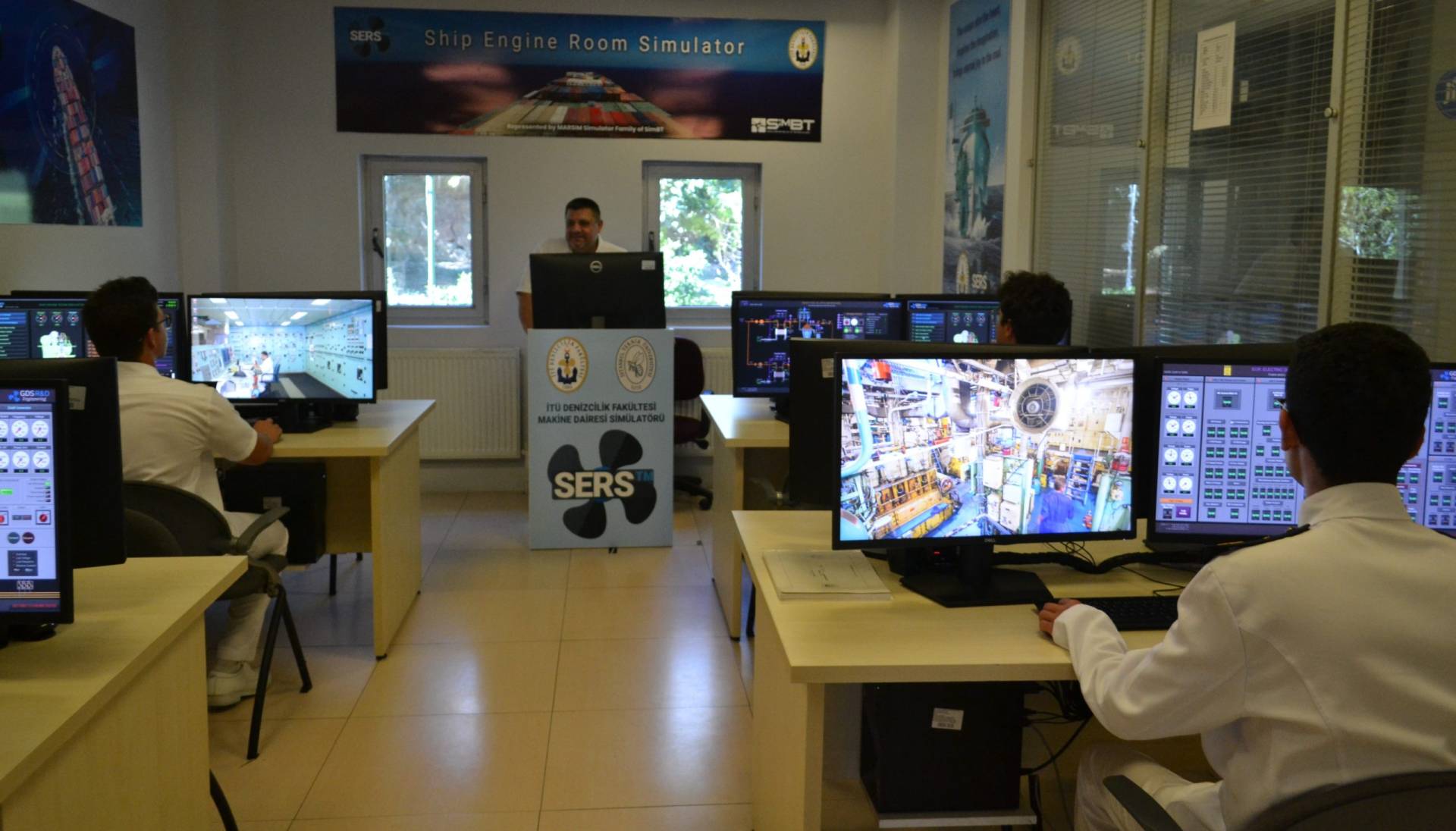
HVTSTM is a software, which can be used in the training of high voltage operations onboard a ship, such as Vacuum Circuit Breaker, Transformer, and high power loading to the main bus.
Click to read more about HVTSTM.
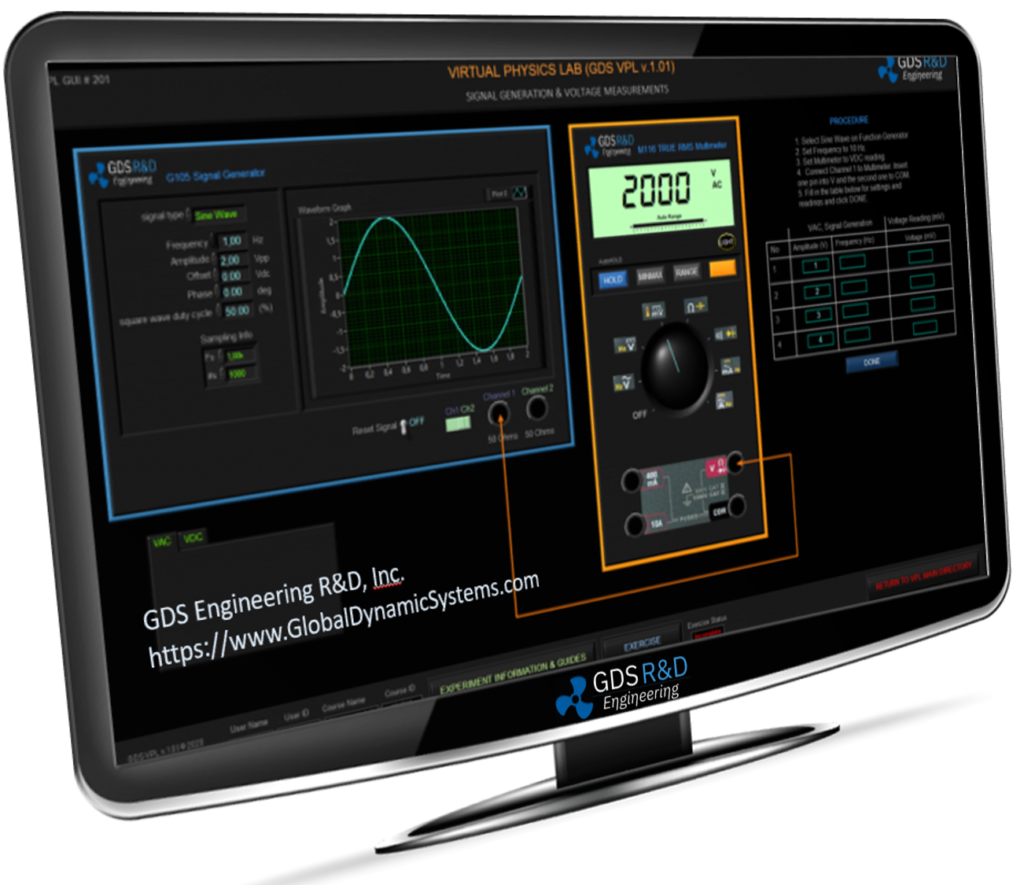
(VPLTM)
VPLTM is software, which supports the laboratory sessions of Physics I and and II experiements, which are mechanical and electrical experiments, respectively.
Click to read more about VPLTM sotware.